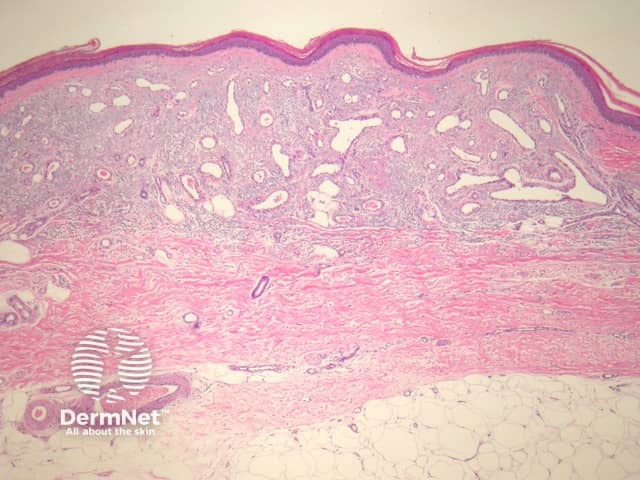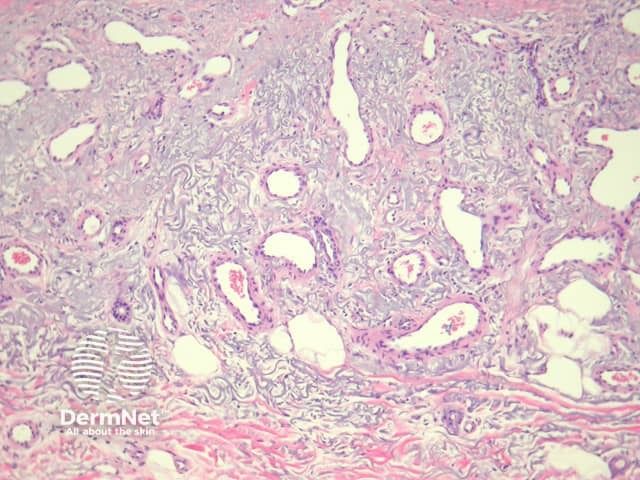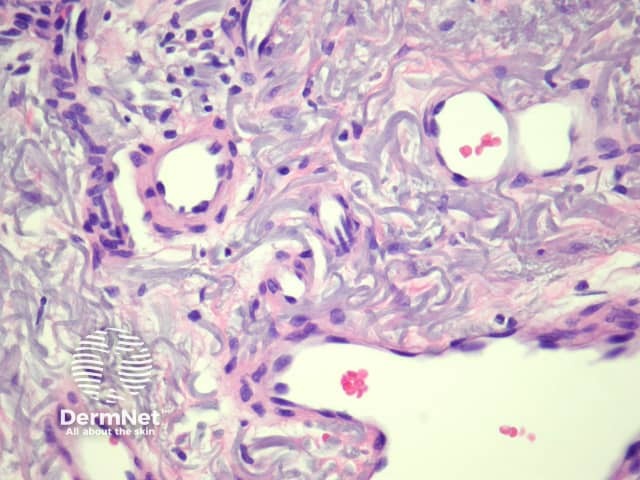Main menu
Common skin conditions

NEWS
Join DermNet PRO
Read more
Quick links
Acquired elastotic haemangioma pathology — extra information
Acquired elastotic haemangioma pathology
Author: Assoc Prof Patrick Emanuel, Dermatopathologist, Auckland, New Zealand, 2013.
Introduction Histology Special studies Differential diagnoses
Introduction
Acquired elastotic haemangioma represents an endothelial proliferation, which commonly presents as a flat or raised erythematous lesion in otherwise healthy individuals.
Histology of acquired elastotic haemangioma
In acquired elastotic haemangioma, sections show prominent solar elastosis with a proliferation of dilated, fine endothelial-lined structures in the upper dermis forming a horizontal band (figure 1, 2). The deep margin of the proliferation is usually well defined. The endothelial lining is bland without multilayering or nuclear atypia (figure 3).

Figure 1

Figure 2

Figure 3
Special studies for acquired elastotic haemangioma
None are generally needed. Lymphatic markers are usually negative. CD31 and CD34 can highlight the blood vessels.
Differential diagnosis of acquired elastotic haemangioma pathology
Low grade angiosarcoma — These can be deceptively bland. An infiltrative growth pattern, nuclear atypia and layering of endothelial cells are clues in diagnosing angiosarcoma.
Capillary haemangioma — Impressive dermal elastosis is usually not seen in other haemangiomas. Acquired elastotic haemangioma often presents with an unusual clinical presentation.
References
- Tong PL, Beer TW. Acquired elastotic hemangioma: ten cases with immunohistochemistry refuting a lymphatic origin in most lesions. J Cutan Pathol. 2010 Dec;37(12):1259–60.
On DermNet
Other websites
- Patología del hemangioma elastótico adquirido – Spanish translation of DermNet page on acquired elastotic haemangioma pathology, by Rune Sk
